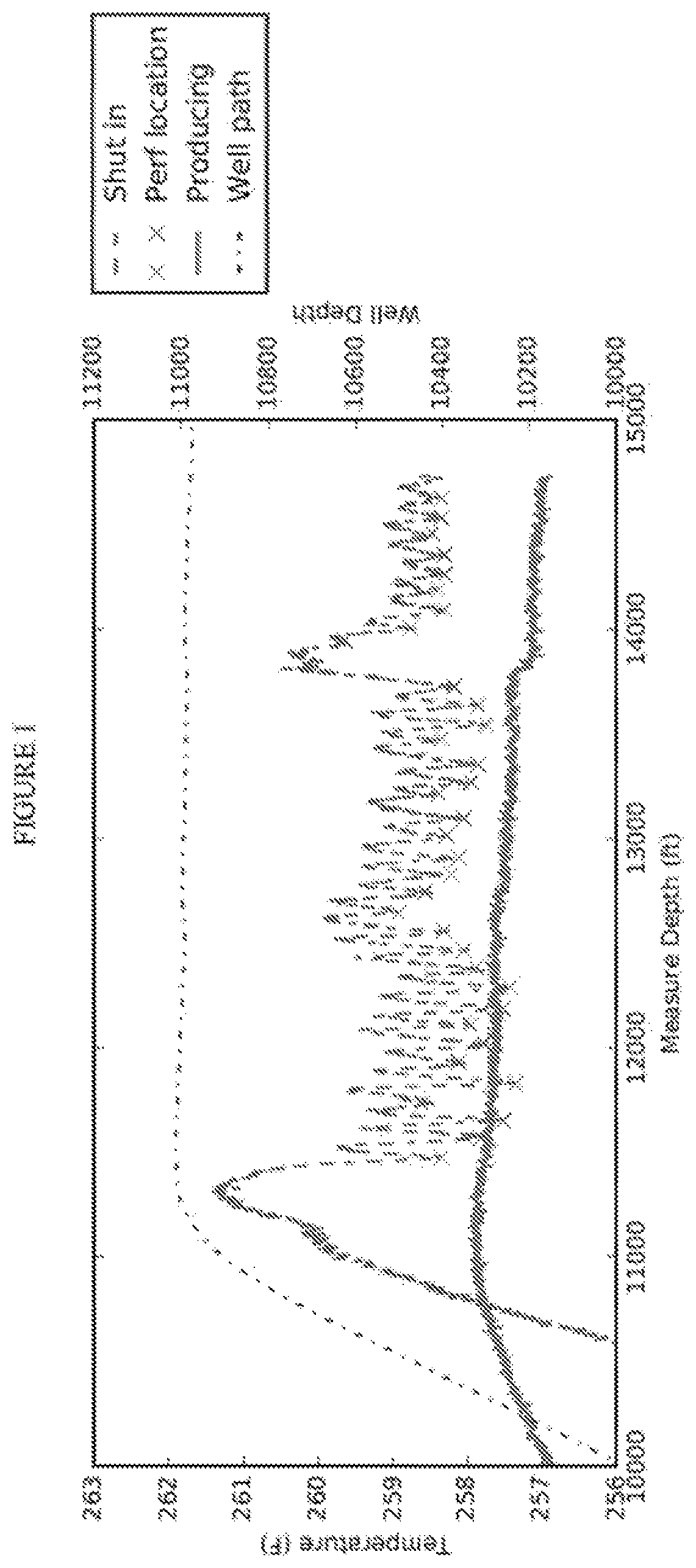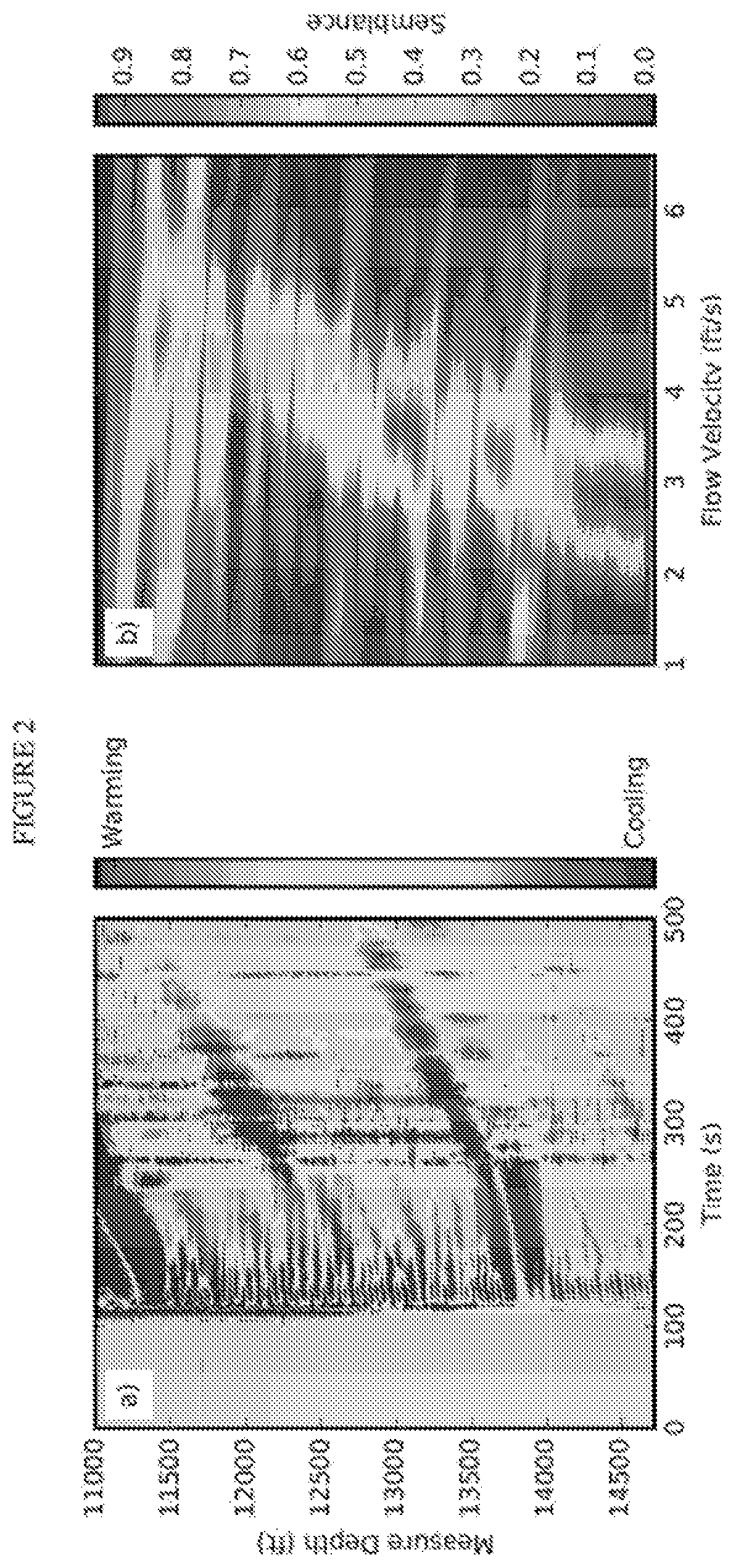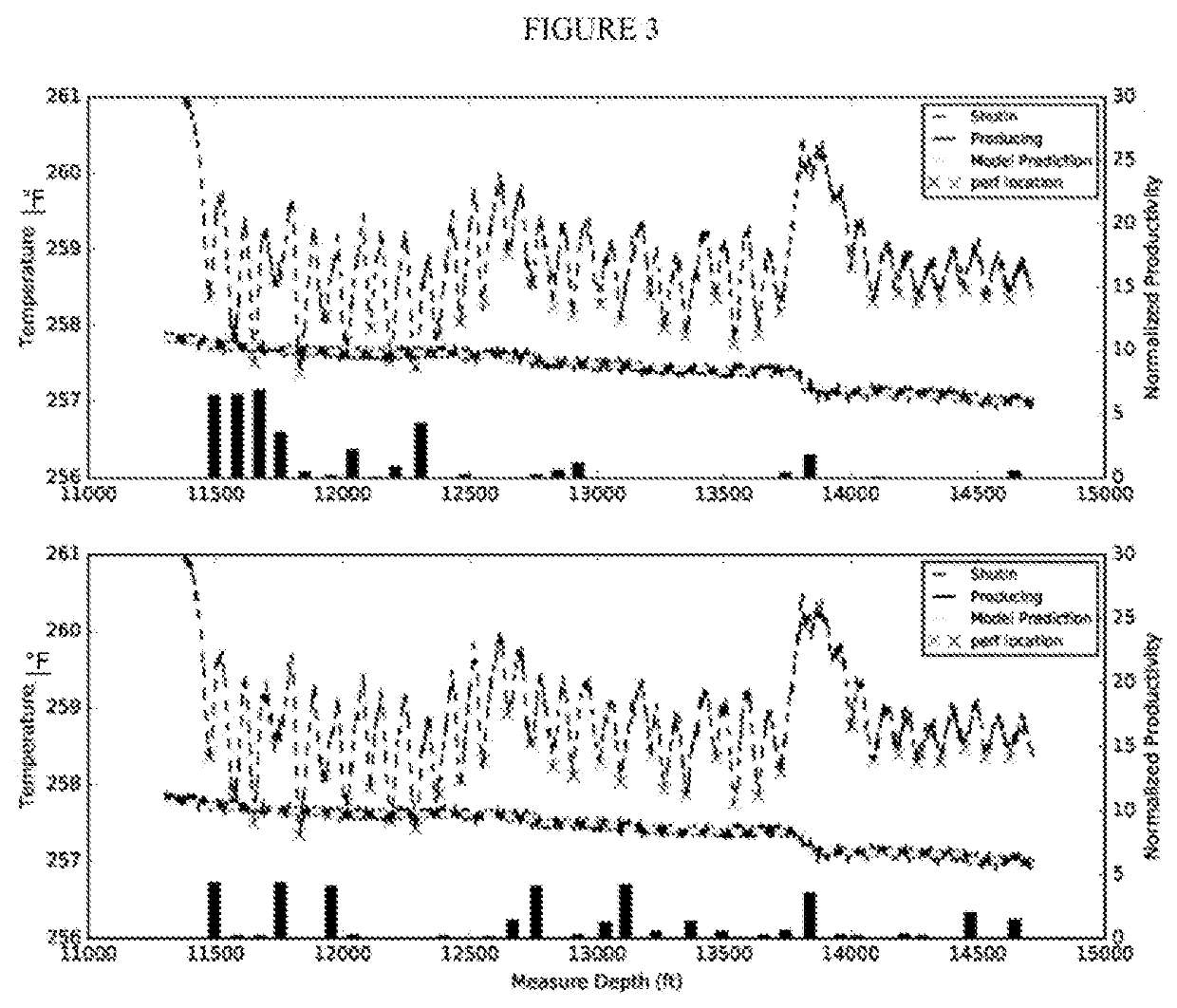Production logging inversion based on DAS/DTS
a production logging and inversion technology, applied in the direction of instruments, insulation, borehole/well accessories, etc., can solve the problems of increasing the logging time on the well, and requiring calibration downhole, so as to improve the signal, improve the temperature differential, and improve the effect of results
- Summary
- Abstract
- Description
- Claims
- Application Information
AI Technical Summary
Benefits of technology
Problems solved by technology
Method used
Image
Examples
Embodiment Construction
>[0087]Swan et al. (2017) developed a novel method that uses low-frequency DAS signal (LFDAS), which is sensitive to small temperature variations, to measure borehole flow velocities. This method was able to provide reliable flow velocity measurements for unconventional oil producers, but the results suffered from low spatial resolution and could not provide estimations at a spacing of perforation clusters.
[0088]Temperature measurements have long been used for production logging purposes (e.g., Ramey, 1962; Curtis, 1973). However, it is only applicable for conventional vertical wells, where geothermal gradients are substantial along the well path, and is not reliable for high-deviated horizontal wells due to the solution non-uniqueness (Ouyang, 2006).
[0089]By jointly inverting for DAS and DTS measurements, we can better constrain the production allocation with higher spatial resolution and associated uncertainty analysis. We have done this with Markov Chain Monte Carlo based inversi...
PUM
| Property | Measurement | Unit |
|---|---|---|
| length | aaaaa | aaaaa |
| temperature | aaaaa | aaaaa |
| temperature | aaaaa | aaaaa |
Abstract
Description
Claims
Application Information
 Login to View More
Login to View More - R&D
- Intellectual Property
- Life Sciences
- Materials
- Tech Scout
- Unparalleled Data Quality
- Higher Quality Content
- 60% Fewer Hallucinations
Browse by: Latest US Patents, China's latest patents, Technical Efficacy Thesaurus, Application Domain, Technology Topic, Popular Technical Reports.
© 2025 PatSnap. All rights reserved.Legal|Privacy policy|Modern Slavery Act Transparency Statement|Sitemap|About US| Contact US: help@patsnap.com



